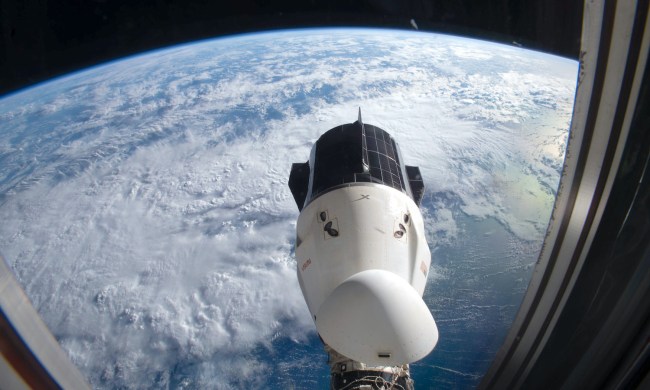SpaceX will try again today to launch its 20th Dragon spacecraft mission to the International Space Station (ISS), one day after the planned launch was scrapped due to unfavorable weather. You can watch the event in its entirety on NASA’s free livestream above.
Using the Falcon 9 rocket, SpaceX’s 18th operational cargo delivery flight to the ISS, known as CRS-18, will (hopefully) take off from Cape Canaveral Air Force Station in Florida at 3:01 p.m. PT on Thursday, July 25.
The mission was delayed at the last possible minute on Wednesday due to cloudy, stormy weather in the area. Forecasts for Thursday aren’t looking much better — there’s a 25% chance of precipitation around launch time, and there might be thunderstorms earlier in the day.
Wednesday was a rough day for SpaceX. After it scrubbed the Falcon 9 launch in Florida, it had to abort a separate test launch of its Starhopper spacecraft in South Texas.
The resupply mission will deliver a significant amount of new tools for the experiments and investigations on the ISS, including a 3D printer that may eventually be able to “print” human organs using stem cells. The CRS-18 shipment will also bring along supplies for an expertiment that will determine how low gravity affects rocks and microbes, with the goal of extracting resources from rocks themselves. There are also some supplies for space gardening — one experiment will try to grow moss in space, which could eventually be used as food or to produce oxygen for future missions to the space station or even Mars.
On top of equipment for experiments and essentials like food, water, and oxygen, the Dragon spacecraft will deliver a new docking adapter to the ISS. The payload weighs more than 2,500 kilograms (5,500 pounds) and is expected to arrive at the station by Saturday, assuming the latest launch attempt goes well.
The next Falcon 9 launch will take place in August and deliver the Amos 17 communication satellite, which is meant to provide broadband over Africa, the Middle East, and Europe.
NASA’s live coverage of the launch will kick off at 2:45 p.m. PT on Thursday. You can watch it live in the player above.



